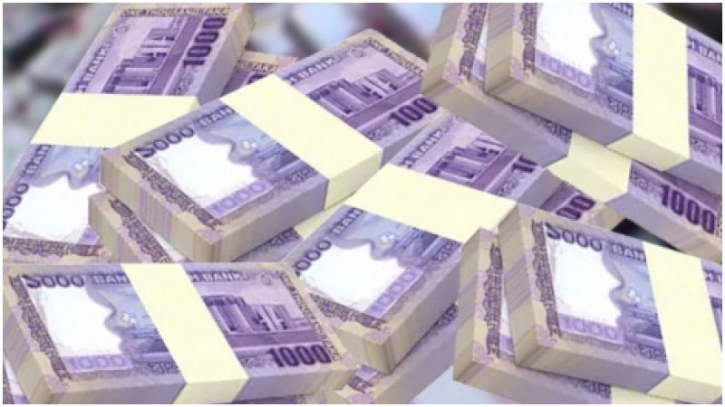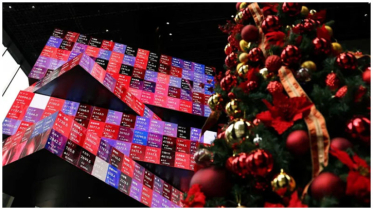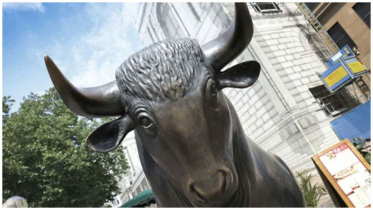Bangladesh Bank increases money printing amid contractionary monetary policy

With a view to controlling inflation, the central bank of Bangladesh announced a contractionary monetary policy in the beginning of the current fiscal year (July, 2023 to June, 2024). Interest rates on loan were increased to reduce the market cash flow. Target for private sector credit growth has been lowered. Importa has been reduced by 21 percent. Demand of commodities fell alongside reduction in industrial production during this period. But, the scenario is different in case of printing money by Bangladesh Bank. The amount of printed money has increased by more than Tk 106 billion since last November.
According to Bangladesh Bank, there was a decline in note printing from June, last year. That scenario changed in October. The amount of money issued by the central bank stood at Tk 2.73 trillion at the end of that month. Of it, about Tk 2.46 trillion was outside of the banking sector. After that the amount of issued notes and money outside of the bank went up gradually. As of January 16, this year, the amount of money issued by Bangladesh Bank was Tk 2.83 trillion. This shows an increase of Tk 106.63 trillion in printed money in just two months and a half.
Officials concerned of the central bank said that there was an added pressure on the banks for cash withdrawal from November. The national election had an impact in this regard. Candidates withdrew money along with the Election Commission. Furthermore, many customers withdrew money amid different uncertainties. Some banks that facing financial crisis got liquidity assistance from the central bank. Owing to these reasons, the amount of issued notes and money outside banks increased.
Information available from Bangladesh Bank stated that the amount of issued notes rose to a record high Tk 3.12 trillion in June, 2023. In that month, the amount of money outside of banks was Tk 2.92 trillion. The country has never seen so much issued notes and money outside of the banks before. Bangladesh Bank announced the monetary policy with the emphasis on controlling inflation. Following the announcement of the policy, repo rate was increased to control cash flow. The maximum celling of the lone interest rates, 9 percent, was removed. Since then, interest rates have kept going up. The maximum interest rate is at 12.43 percent in the current month of February. That means there was an increase of 3.43 percent interest hike in last seven months. During this period, repo rate was increased few times to take it to 8 percent.
The interest rates were increased to bring down inflation, but no impact is yet visible. According to information from Bangladesh Bureau of Statistics, the inflation was at 9.41 percent in December, 2023. It was over 9 percent all along 2023 albeit economists believe that the actual inflation rate is way higher than the Bureau of Statistics proclaims.
Former Bangladesh Bank Governor Dr Salehuddin Ahmed believes that it will not be possible to bring inflation under control with so much cash outside of the banks. “The contractionary monetary policy Bangladesh Bank is talking about will fail because a group of money is there sitting on large cash. More than half of country’s economy is beyond the control of the banking sector. In such a situation, inflation cannot be controlled by increasing interest rates and announcing contractionary monetary policy,” he told.
“The reign of black money in the country’s economy is on the rise. Bribery, corruption and extortion have gone up after the national election. So, it is natural that the necessity of cash will increase,” he added.
There is an ideal proportion regarding the presence of issued notes in a country’s economy. The amount of cash issued by Bangladesh Bank before 2020 was at best 12 percent of the broad money. The rate slightly due to the Covid-19 pandemic. Despite that it was 13.42 percent in June, 2021. The rate was limited to 13 percent in 2022. But, in June, last year, the percentage went up to 16.52. Though it got down a bit in December, 2023, the rate currently stands at nearly 15 percent. Economists are of the opinion that the maximum rate can be 10 percent given the technological development.
“The necessity of cash in the country increases in line with corruption. The rule of black money is rampant everywhere. So, the demand of cash is not diminishing. Influential people, including government employees, politicians and businesspersons are piling cash in their homes. They making transactions worth millions through cash,” Economist Ahsan H Mansur said.
He also said, “In the whole world, demand of cash goes away with the financial inclusion. But, it is not happening in our country despite that fact that financial inclusion and radius of banking sector are quite large. People are making cashless transactions across the world. Even in neighboring India, people are using Paytm to make small transactions. But, we do not have it here. All the transactions in large wholesale markets take place in cash.”
The amount of issued notes started to go down in the middle of last year due to the contractionary monetary policy and an increased confidence of the consumers in the banking sector. At the same time, the amount of money outside of the banking sector also went down. The amount of issued notes stood at Tk 2.92 trillion in July, Tk 2.82 trillion in August and Tk 2.77 trillion in September. Based on this calculation, the amount of issued notes declined in October by Tk 389 billion. But, the amount of printed notes started to go up in November.
However, Bangladesh Bank Executive Director and Spokesperson Mezbaul Haque claimed that the amount of issued notes was increased to support the country’s GDP growth. “Economic growth must continue even if a contractionary monetary policy is followed. Therefore, money is being issued as per the necessity. The deposit growth is quite good now. With the increased repo rate, the interest rates on deposits are also going up. Therefore, people are now getting interested to keep their money in banks. The issue is under control albeit the amount of notes is on the rise.”
An overwhelming 92 percent of the notes printed by Bangladesh Bank are of denominations of Tk 500 and Tk 1,000. In June, last year, the central bank had 23592.69916 trillion notes of Tk 500 denomination valued at approximately Tk 1.18 trillion. This was 38 percent of the issued money. There were 16806.8 trillion notes of Tk 1,000 denomination with a value of Tk 1.68 trillion, which represented over 54 percent of total notes in the market. In total, the amount of money printed by the central bank in June, last year stood at over Tk 3.1 trillion.
People concerned are of the view that people tend to keep the money at home due to the easy availability of the larger notes. Then again, the money received from bribery and corruption goes to vault as black money. Notes of Tk 1,000 denominations are mostly used in illegal transactions, including hundi. Bangladesh Bank is also issuing larger notes owing to increased demand. The situation is leading the country to a position where the shadow economy is bigger than the main economy.
Former Association of Bankers Bangladesh Chairman and Mutual Trust Bank Managing Director Syed Mahmubur Rahman said that larger notes are in very high demand nowadays. “Preservation and carrying of high-value notes are easy. As a result, people ask for notes of Tk 1,000 as they take little space to keep them. The country has more cash than liquidity in the banking sector. It needs to be looked at if the larger notes are playing any role in this regard.”—Bonikbarta
.png)




